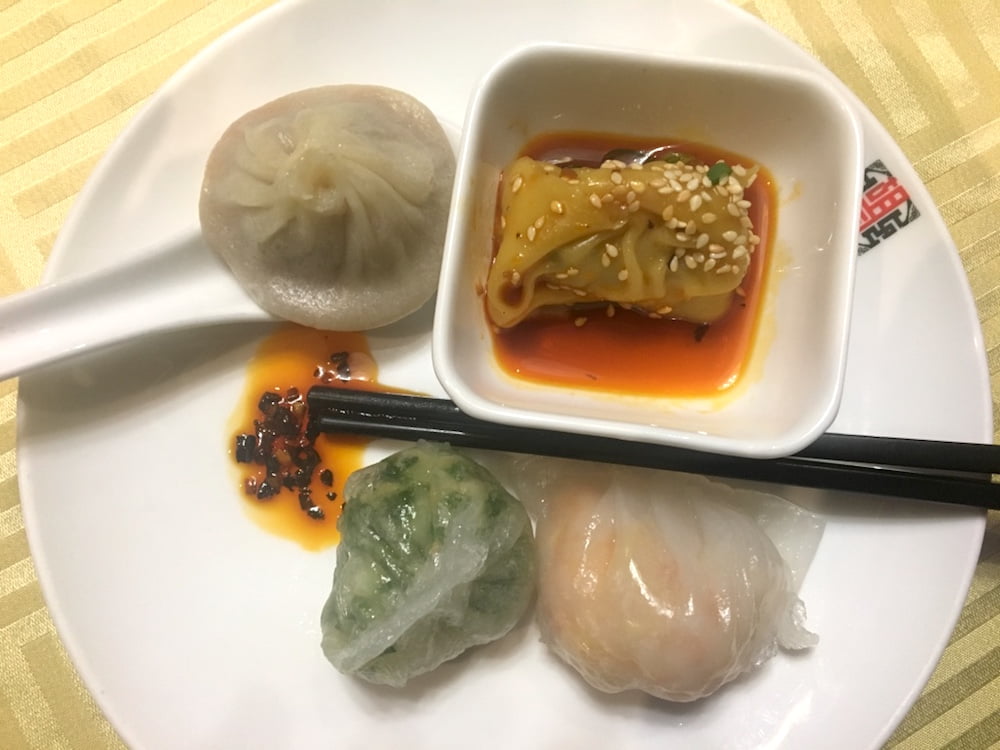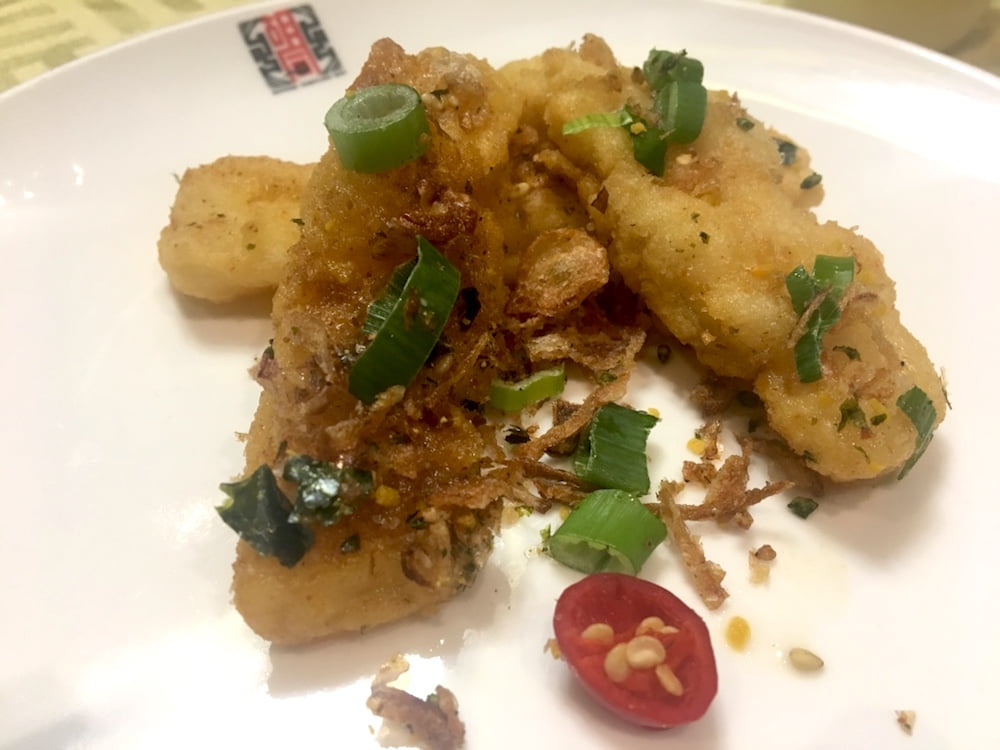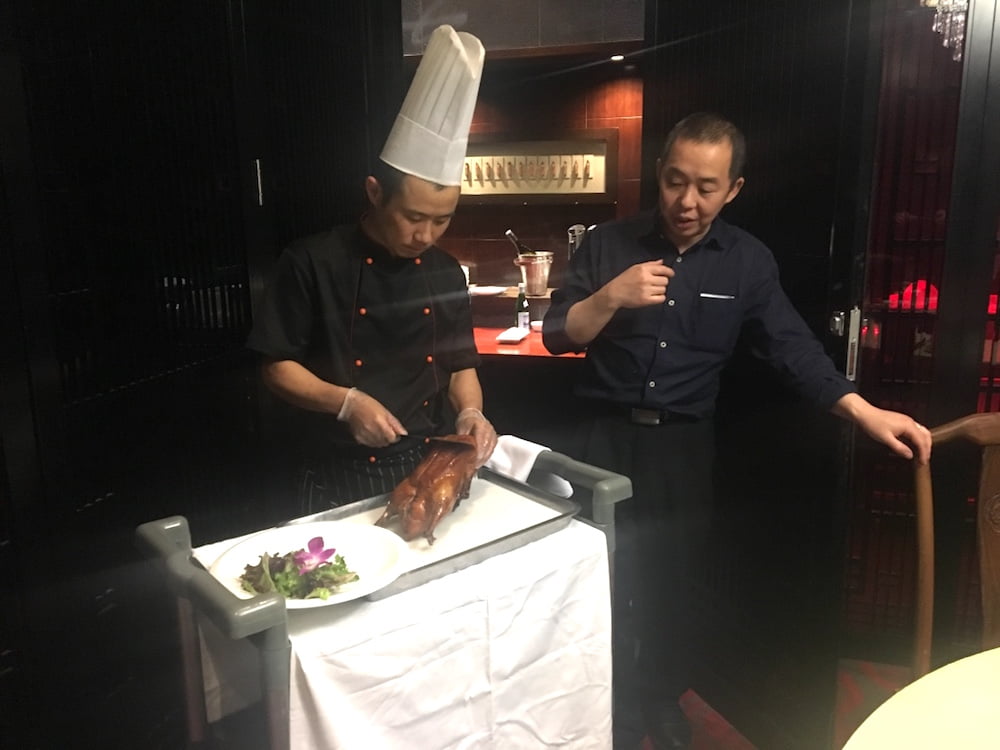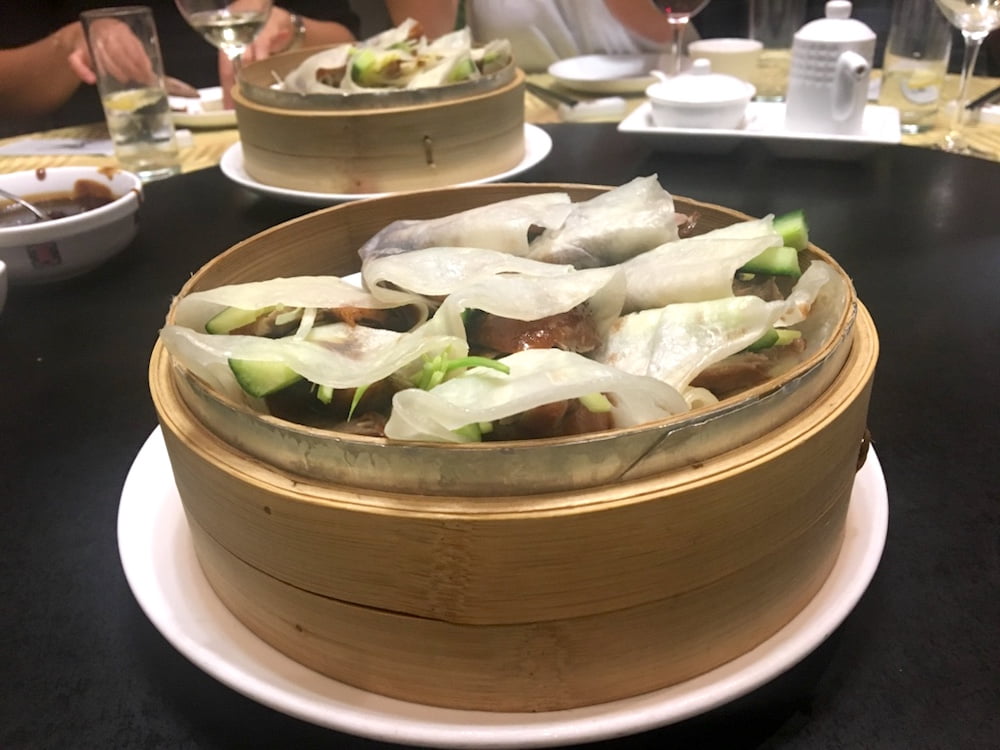At HuTong Peking Duck and Dumpling Bar, their signature dish has a long history that started on the dinner plates of Chinese royalty.
Diners from all over Melbourne flock to HuTong Peking Duck and Dumpling Bar in Prahran for their famed Peking Duck. This evening we’re about to find out why it’s so popular.
Even if you’ve never tried Peking Duck, you will certainly have heard of it. Those shiny brown-skinned ducks that you see hanging up in the windows of myriad restaurants in Chinatown the world over are one of China’s most famous dishes.
We take a seat at the round table in a private dining room at HuTong Peking Duck and Dumpling Bar in Prahran with a group of friends. Several of us admit we’ve skimped on lunch to make sure we’ve got plenty of room to devour Peking Duck for dinner.

But first, entrees. Our lively conversation changes topic to the perfect dumplings that we see before us: wontons with hot chilli sauce, prawn, garlic chive with prawn and those soup-filled favourites, shao-long bao dumplings.
The wontons with hot chilli and the shao-long bao take equal first place amongst the table. Some show off their shao-long bao expert skills by eating them the correct way: bite a little off the skin to pierce the dumpling and slurp out the soup before eating the rest. Delish!
Salt and pepper squid is up next. The salt and pepper batter is crispy and golden and it’s sprinkled with crispy fried shallots, fresh chilli and spring onion. It’s both tender and crispy and is one of the best I’ve tasted in a long time.

Plates are cleared to make way for the main attraction and Hutong Peking Duck and Dumpling Bar Manager Ken begins to tell us about the history of China’s globally revered dish.
With a long history dating back around 1000 years, the dish we all know and love today was originally prepared for the Emperor of China from the Yuan Dynasty. It’s been enjoyed by common people like you and I since the first restaurant serving this succulent duck opened in Beijing in the 1400s.
In Australia the welfare of the bird is important so they are reared differently to how they are in China. They aren’t force fed and fattened up quickly, but left to gain weight at a natural pace. This, says Ken, means the duck tastes differently in Australia – less fatty, which he prefers.

After the duck has been expertly sliced by the chef, Ken explains the various ways it’s eaten in China.
Ladies who don’t like to get their hands sticky by eating it in a pancake take a different approach. They place a few slices of duck on their plate, sprinkle with a little white sugar, drizzle on some of the special duck sauce and use chopsticks to eat it. We try this at the table – I really like the sweet dusting of sugar with the duck but reactions vary across the table.
Ken also explains that in China it’s more common to serve the duck with lettuce instead of pancakes which offers cool relief to this dish on hot days.
But this evening we’re eating Peking Duck served with cucumber, leek – not spring onion, which was not available in China – and special duck sauce delicately wrapped in paper-thin homemade pancakes.
The duck sauce, Ken explains, is a mix of hoi sin and plum sauces, with a splash of port which gives it a deeper, richer flavour.

We happily eat through the duck pancakes Ken has prepared for us, and then we’re invited to make our own. Our pancake wrapping skills are put to the test, but our eating skills are second-to-none. Each piece is devoured, fingers licked and bellies rubbed with smug satisfaction.
Soon, the whole duck is gone and all that remains at the table are six friends expressing gratitude to the chefs of the Yuan Dynasty for their contribution to this globally-loved dish.
If you’re in the city, try HuTong’s East restaurant for cocktails and modern Chinese fare.
HuTong Peking Duck and Dumpling Bar
162 Commercial Road, Prahran
Lunch Mon -Sun 11.30am – 3pm
Dinner Sun -Thurs 5.30pm – 10.30pm, Friday and Saturday 5.30pm – 11pm
www.hutonggroup.com.au



